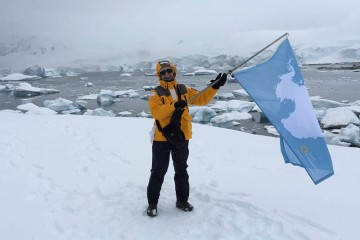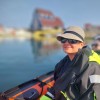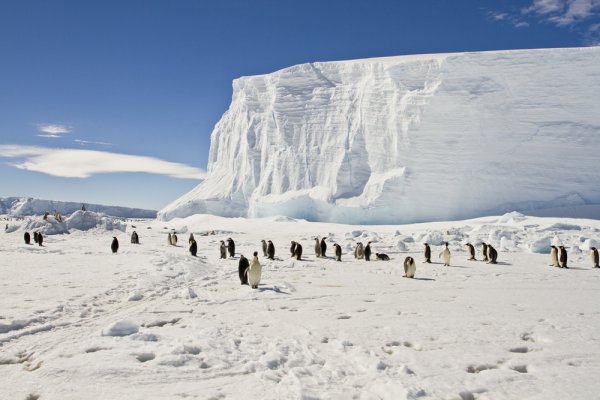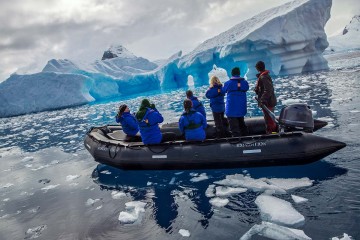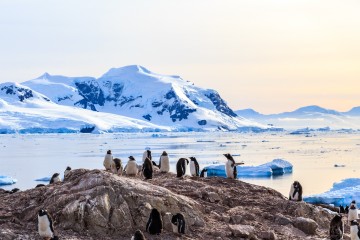Often hailed as the pinnacle of awe-inspiring voyages, an expedition cruise to Antarctica is an adventure of colossal proportions. Yet, for many, mystery abounds. What exactly is an expedition cruise to Antarctica, how does it differ from a traditional cruise, can anyone join in on the adventure, and what benefits does it offer?
Here’s all you need to know about ‘the sea voyage by which all others are measured’.
1. What is an expedition cruise to Antarctica?
2. How does an expedition cruise ship differ from a classic cruise liner?
3. Can anyone go on an Antarctica cruise?
4. Protecting Antarctica: a priority for expedition cruises & its passengers
5. Where do Antarctica expedition cruises leave from?
6. The four main itineraries of Antarctic expedition cruises
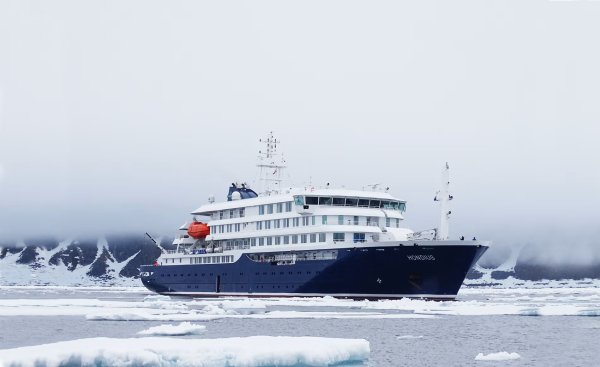
1. What is an expedition cruise to Antarctica?
An expedition cruise to Antarctica is a journey that offers a uniquely immersive experience in our planet’s most remote, pristine, and awe-inspiring region. Rather than be mere ‘observational floating platforms’, expedition cruises are specifically designed to offer opportunities to feel, hear, see, and witness the breathtaking landscapes, abundant wildlife, and scientific wonders of the Antarctic continent.
Unlike traditional cruises, expedition cruises to Antarctica focus on exploration, adventure, and education rather than luxury and entertainment. Their main priori objective is to allow passengers to experience Antarctica's raw, natural beauty and gain a deeper understanding of its environment and ecosystems.
Those lucky enough to have journeyed on an expedition cruise to the White Continent often call the experience ‘life-changing’ due to the sensory overload of being in such a pristine, natural environment that is so far removed from modernity. Kayaking alongside sky-scraping icebergs and walking amid a colony of penguins can make you rethink your existence on this planet.
Despite our best efforts, the overall experience of an expedition cruise to Antarctica is indescribable.
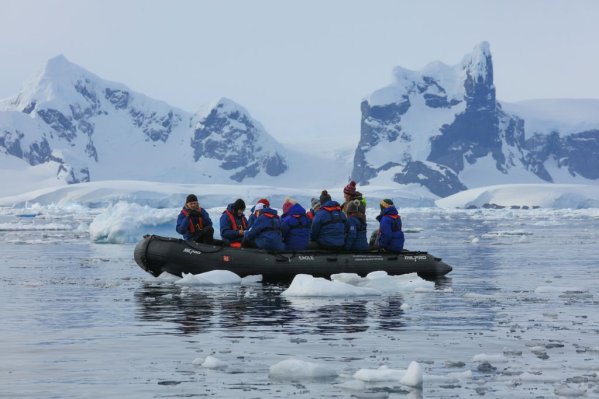
2. How does an expedition cruise ship differ from a classic cruise liner?
Expedition cruise ships are purposely built, fitted, and crewed to facilitate in-depth explorations and immersive experiences in remote places – and by remote, we mean thousands of nautical miles from the nearest inhabited landmass. With their formidable prowess, expedition cruise ships are equipped to navigate through nature's harshest elements.
Aside from being ‘self-sufficient ecosystems’ of extraordinary adventures, expedition cruises also set themselves apart in their focus. Their itineraries emphasize exploration, education, outdoor activities, and connecting with the natural world, offering a different cruising experience. You’ll still end your day reminiscing on the day’s happenings with a drink in hand. But, instead of a cosmopolitan, it’s more likely to be stiff scotch.
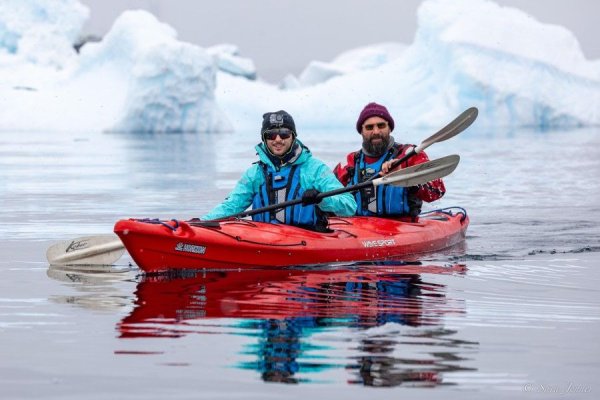
Here are some crucial differences between expedition cruises and traditional cruise liners:
1. Size and Capacity: Expedition cruise ships are generally smaller than cruise liners, so they accommodate a limited number of passengers, ranging from around 50 to a few hundred. This smaller capacity allows for more personalized experiences, better access to remote areas, faster disembarking, and a more intimate atmosphere on board. The comradery experienced aboard an expedition cruise is incomparable.
> Check out the Best Small Ships Going to Antarctica in 2023/24
2. Destination Emphasis: Expedition cruises to Antarctica prioritize destinations known for their natural or historical significance. They primarily focus on exploration and education of their destinations, and everything about them, including the onboard experiences detailed below, reflects that focus. You'll visit known penguin colony sites, bays visited by whales, scientific research stations, and famous historical sites dating back to the so-called Heroic Age of Antarctic Exploration.
3. Onboard Experiences: Expedition cruises offer more educational and immersive excursions. Their crew includes expert guides, naturalists, and scientists who share their knowledge about the local wildlife, ecosystems, and history, offering lectures, presentations, and guided excursions. On an expedition cruise in Antarctica, you’ll head off on daily Zodiac excursions (weather permitting), hiking, kayaking, and even overnight camping excursions on ice shelves.
> Learn more about the fantastic activities offered on Antarctica expedition cruises.
4. Flexibility and Adaptability: Unlike cruise liners which must strictly adhere to their itinerary, expedition cruises benefit from the flexibility and can adjust itineraries based on weather conditions and unique wildlife sightings. Making impromptu stops or last-minute changes to optimize your experience is much easier when operating a smaller ship.
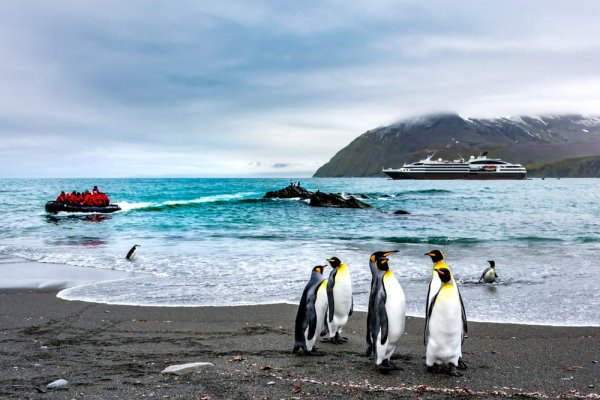
5. Ship Design and Features: Expedition cruise ships are purpose-built or refitted to navigate Antarctica’s challenging waters and icy conditions. They often have strengthened hulls, ice-class ratings, and advanced technology for safe and efficient cruising in remote areas. The smaller the ship, the smaller and more remote the landing sites you can visit.
6. Environmental Considerations: Expedition cruises prioritize responsible tourism practices and sustainable operations. They follow strict guidelines to minimize their impact on the environment and wildlife. These cruises aim to create awareness and promote conservation efforts, encouraging passengers to appreciate and protect the destinations they visit.
While traditional cruise liners offer a broader range of amenities, entertainment options, and larger-scale onboard facilities, expedition cruises focus almost entirely on the unique experiences only Antarctica offers. Because who needs a cabaret show when you have this outside your cabin window?

3. Can anyone go on an Antarctica cruise?
Expedition cruising to Antarctica can be enjoyed by almost anyone with an average level of fitness. While it is expected that all passengers have enough mobility to be able to get in and out of an inflatable Zodiac, which can be a bit wobbly, your expedition team is there to give you a hand and ensure you don’t fall overboard. Of course, life jackets are provided for everyone’s safety.
Plus, there are myriad ways to work around any mobility issues you may have. You can skip longer hikes or walks over rough terrain if you feel uneasy, or enjoy a thrilling yet exhausting day on shore one day, and decide to take the next to rest. Your Antarctica adventure is yours to enjoy and tailor to your specific needs. There’s absolutely no need to ‘do it all’ if you’re not up to it! Enjoying the spellbinding views of the White Continent from the outer deck of your cruise ship on a ‘rest day’ is mesmerizing enough.
Some expedition cruises require passengers to be older than 12. If you are planning a family expedition, be sure to chat with our Viva Destination Specialists, who’ll be able to advise you on the best ship and itinerary to suit your needs. Other than that, there are no upper-age restrictions.
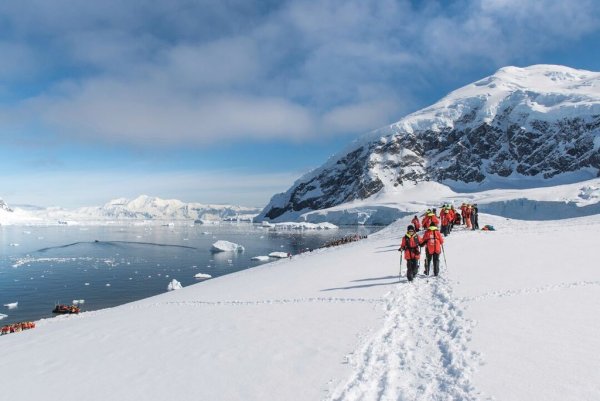
4. Protecting Antarctica: a priority for expedition cruises & its passengers
The International Association of Antarctica Tour Operators (IAATO) has set regulations to limit the number of passengers that can disembark at any landing site (usually 100) to minimize the environmental impact and preserve the delicate Antarctic ecosystem. Guidelines focus on specialist safety protocols to protect expedition passengers, the wildlife they come to visit, and the pristine environment on which they set foot.
To further curb the impact of tourism, IAATO also restricts the number of expedition ships allowed to visit. Only about 100 companies are allowed to operate expedition cruises to Antarctica and all must be members of IAATO and adhere to its strict guidelines. Naturally, all the operators we work with here at Viva, are likewise IAATO members!
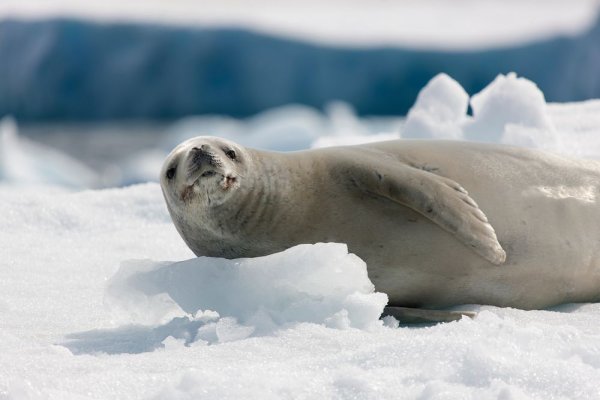
5. Where do Antarctica expedition cruises leave from?
Most expedition cruises to the Antarctic Peninsula, the outer islands of South Georgia, and the Falklands depart from several locations in South America. Meanwhile, expeditions to more remote and lesser-visited Eastern Antarctica destinations leave Australia and New Zealand.
Departure ports in South America
The two most popular departure points in South America are Ushuaia in Argentina and Punta Arenas in Chile. Strategically located at the southern tip of South America, these two stellar spots are bonafide gateways to Antarctica.
Ushuaia, Tierra del Fuego, Argentina – Often referred to as the "End of the World," Ushuaia is the southernmost city in the world and, as such, the single most popular departure point for Antarctic expedition cruises. Nestled in Patagonia's Tierra del Fuego archipelago, the city is almost entirely supported by tourism (to Antarctica and Patagonia). It is the last port of call before the infamous Drake Passage, the magnificent and turbulent body of water which separates South America and Antarctica, connecting the Atlantic and Pacific oceans. Ushuaia is the closest land port to the Antarctic Peninsula, so expedition cruises of varying durations are offered. If you're tight for time, you'll find the shorter itineraries departing from Ushuaia ideal.
> Read More: Why visit Ushuaia?
Punta Arenas, Chile – Punta Arenas is further north along the western South American coast. To reach the Drake Passage, expedition cruises departing from here sail through the Beagle Channel and around Cape Horn, resulting in longer itineraries and more chances of spotting marine life that may not migrate to Antarctica. A popular departure port for particular Antarctic itineraries, Punta Arenas, is nevertheless not as popular as Ushuaia, so your choice of ship and itinerary is more limited.
Other less common departure points include Puerto Madryn in Argentina and Montevideo in Uruguay. These ports may be used for specific Antarctic itineraries and private charters.
When considering which departure point is best for your expedition cruise to Antarctica, consider your preferences, available itineraries, trip duration, and logistical convenience. Both Ushuaia and Punta Arenas offer many options for adventure travel through some of South America's most revered national parks. If you'd love some help figuring out which departure port best suits you, contact Viva's Destination Specialists, who can help narrow your options.
Departure ports in Australia and New Zealand
Antarctica expedition cruises departing Hobart (Australia) and Dunedin or Invercargill (New Zealand) operate in a league of their own. They are the longest and most expensive expeditions on offer (given the greater distance to the southern continent) and visit the eastern coast of Antarctica, the remotest and wildest region of the Peninsula. Surpassing the altitudes of western Antarctica, East Antarctica showcases jaw-dropping expanses of glaciers, colossal icebergs, and snow-capped mountains – and serves as the habitat for an array of remarkable creatures. Only a handful of long-haul expedition cruises depart from Australia and New Zealand every summer. These are voyages of epic proportions. Undoubtedly, these are the most immersive polar expeditions you could ever undertake.
Hobart, Tasmania – Australia’s Antarctica expedition port sees a select few departures each year. Historically, Hobart was the departure port of an array of famous exploration voyages, including Sir Douglas Mawson’s Australasian Antarctic Expedition (1911-1914), Sir Ernest Shackleton's British Antarctic Expedition (1914-1917) and the Commonwealth Trans-Antarctic Expedition (1955-1958) led by Sir Vivian Fuchs, to complete the first overland crossing of Antarctica.
Dunedin – Auckland, New Zealand – Dunedin, the oldest city in New Zealand, is affectionately known as the "Edinburgh of New Zealand" due to its strong Scottish influence. Located in the southern part of the country, this city proudly displays its Scottish heritage with an array of remarkable architecture. Within the city boundaries lies the extraordinary Otago Peninsula, renowned worldwide as a wildlife sanctuary. The Peninsula is home to the only Northern Royal Albatross breeding colony on the mainland.
Port of Bluff, Invercargill, New Zealand – New Zealand's answer to Ushuaia (as its southernmost city), Invercargill is about 180km from Dunedin. It is used as an alternative port on specialist expedition cruises to Antarctica. The town is nestled amid a stunning wilderness area and is the gateway to the breathtaking landscapes of the Southland region, Fiordland, the Catlins, and the iconic Southern Scenic Route.
6. The four main itineraries of Antarctic expedition cruises
Expedition cruises to Antarctica offer various itinerary options, each focused on exploring a different region and aspect of the continent.
Here are the four main itinerary options commonly available:
1. Classic Antarctic Peninsula
The 11-day Classic Antarctica is the most popular and traditional expedition itinerary, focusing on the Antarctic Peninsula and its surrounding islands. After departing South America, cruises cross the Drake Passage and visit iconic sites such as Deception Island, Paradise Bay, and Port Lockroy once they reach the Antarctic Peninsula. This itinerary offers opportunities for wildlife encounters, including penguins, seals, seabirds, and excursions to glaciers and research stations.
> See Viva’s Antarctic Peninsula Expedition Cruises
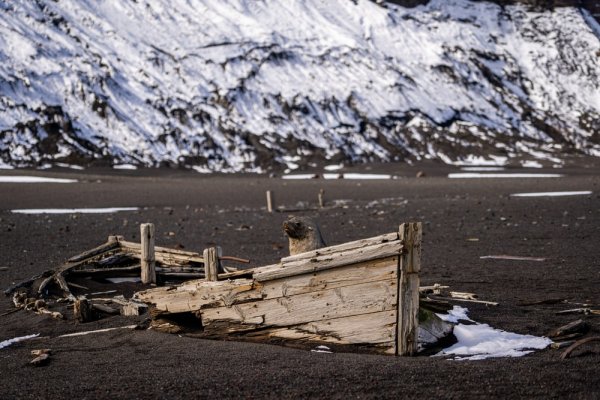
2. Falklands, South Georgia, and Antarctic Peninsula
This longer (~21 days) and more comprehensive itinerary combines the Antarctic Peninsula with visits to the Falkland Islands and South Georgia. Discover the unique birdlife and rich history of the Falklands before visiting what's known as the King Penguin Headquarters of Antarctica. South Georgia is the most coveted destination for animal lovers.
> See Viva’s South Georgia and the Falklands Expedition Cruises
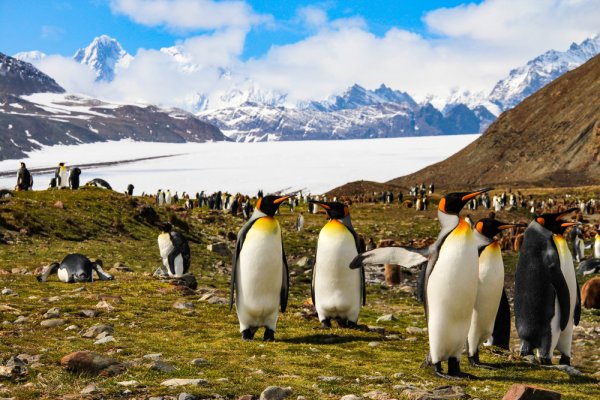
3. Crossing the Antarctic Circle
For those seeking an even more immersive experience, the Antarctic Circle itinerary takes travelers farther south, crossing the Antarctic Circle (latitude 66°33'46" South). This expedition ventures into more remote and less frequently visited areas of the Antarctic Peninsula, offering a sense of old-age exploration and the chance to witness unique landscapes (with more ice cover) and wildlife encounters galore. These itineraries typically run for ~14 days.
> See Viva’s Expedition Across the Antarctic Circle
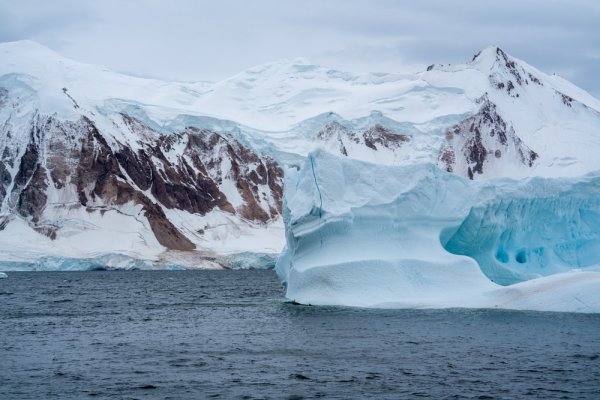
4. Weddell Sea and East Antarctica
This itinerary focuses on the rarely visited Weddell Sea and the vast wilderness of East Antarctica – renowned for its stunning icebergs, massive colonies of emperor penguins, and breathtaking scenery. This region is known for its pristine beauty, remoteness, and opportunities for wildlife sightings. Expedition cruises to East Antarctica depart from Australia and New Zealand and typically take one week to reach Antarctica. There are stops en route on remote islands (like Campbell and Macquarie), yet you spend a lot more time at sea on these itineraries, which range in length from 22 to 30 days.
> See Viva’s Antarctica Expeditions from New Zealand and Australia
An expedition cruise to Antarctica offers a once-in-a-lifetime opportunity to explore one of Earth's most pristine and awe-inspiring regions, providing a deep connection with nature and a greater appreciation for the importance of environmental conservation. If you’d love to learn more about Expedition Cruises to Antarctica, contact Viva’s Destination Specialists right here.
Laura Pattara
Laura Pattara has spent more than a decade writing about polar cruising at Viva Expeditions. While she has not yet set foot on the southern ice herself, she has mastered the art of turning expert accounts and field notes into guides that feel like the next best thing. Laura has a soft spot for penguins, perfectly packed duffel bags, and a well-earned cocktail in a wild place.
|
